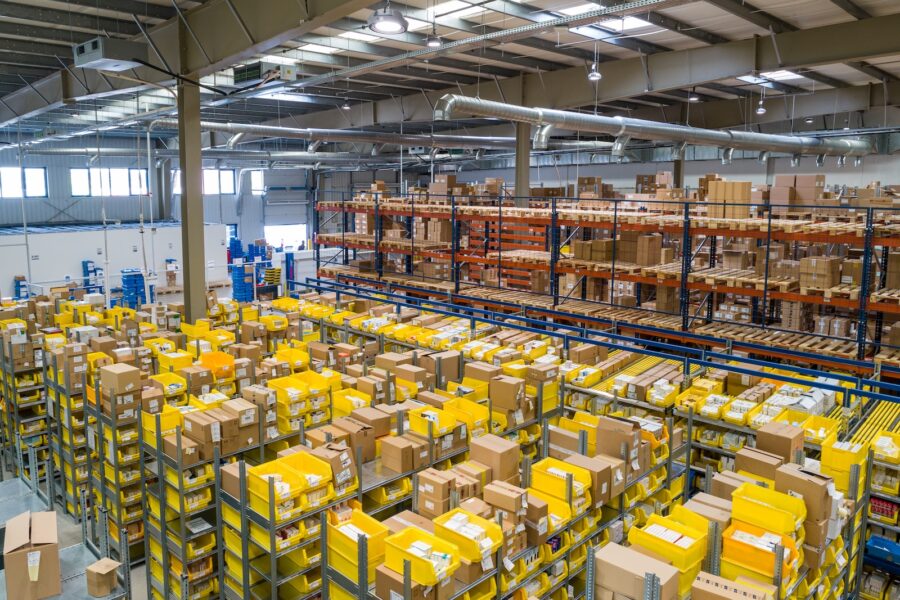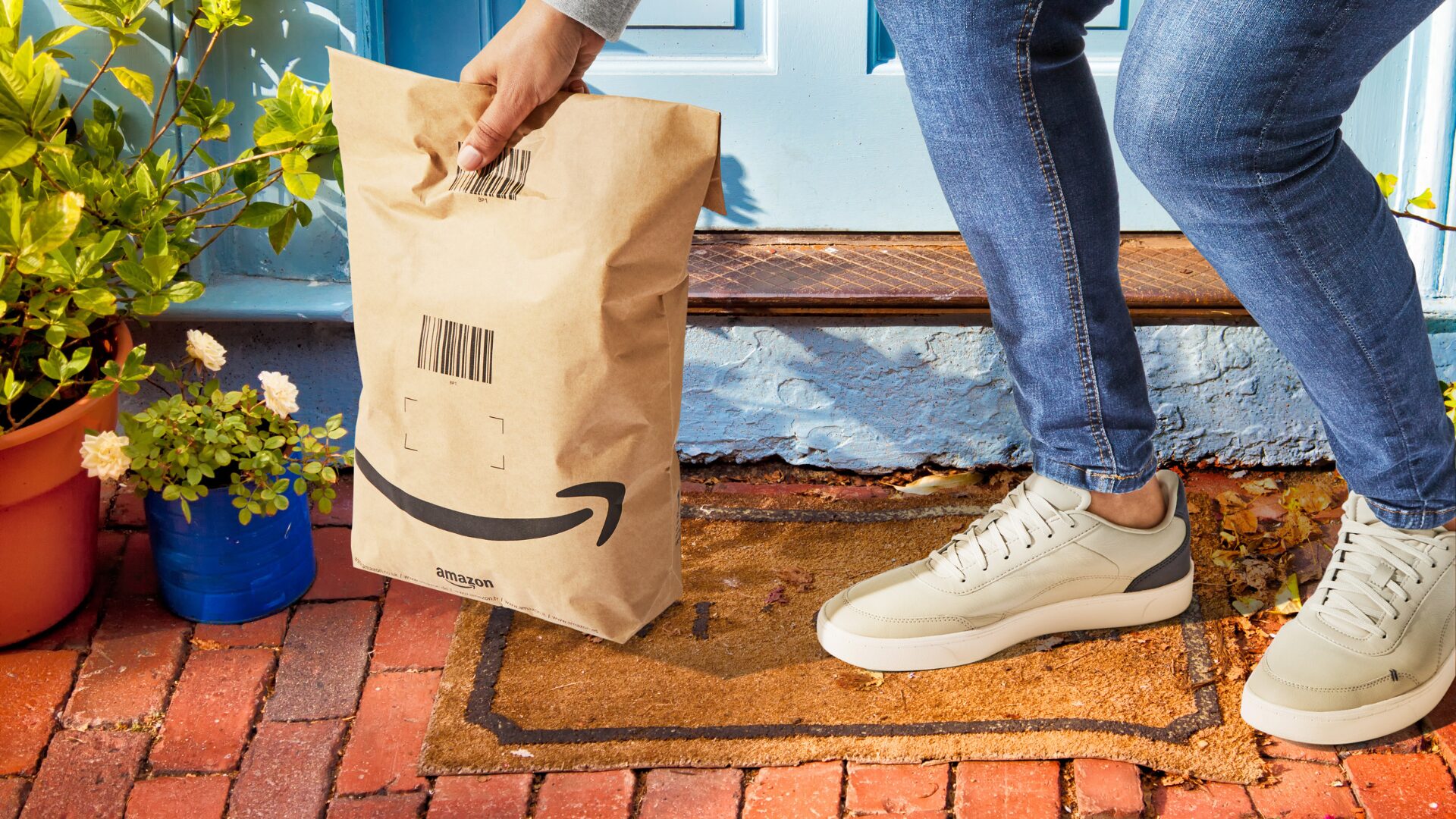Walmart and Amazon, the top two retailers in the U.S., are both making big changes to their fulfillment strategies for online orders, aiming to ramp up next-day delivery.
WALMART’S HUGE NEW HIGH-TECH CENTER
Walmart recently opened its largest fulfillment center to date, a 2.2 million-sq.-ft. facility located 20 miles northeast of Indianapolis in McCordsville, Indiana. This new fulfillment center is the second of four “next-generation” facilities that will utilize a combination of people, technology, and machine learning to fulfill more orders, more quickly.
The massive McCordsville center is designed to expand access to Walmart’s next- and two-day shipping. When integrated with the rest of the retailer’s fulfillment network, these next-generation fulfillment centers will allow Walmart to reach 95% of the U.S. population with the service.
“The McCordsville grand opening marks a major milestone in our supply chain modernization journey,” said Karisa Sprague, senior vice president of Fulfillment Network Operations for Walmart U.S. “With more customers shopping online, we’re leveraging state-of-the-art technology to increase speed of delivery all while creating tech empowered career opportunities for our associates.”
The new fulfillment center will house more than 1,000 employees, according to Walmart.
AMAZON PIVOTS FROM NATIONAL TO REGIONAL MODEL
Meanwhile, Amazon recently shifted from a national fulfillment network to a regionalized model. According to CEO Andy Jassy, the fulfillment strategies are intended to reduce costs and enable more next-day and same-day deliveries.
“We made significant internal changes (e.g. placement and logistics software, processes, physical operations) to create eight interconnected regions in smaller geographic areas,” Jassy explained in a letter to shareholders. “Each of these regions has a broad, relevant selection to operate in a largely self-sufficient way, while still being able to ship nationally when necessary.”
During the pandemic, Amazon doubled the size of its fulfillment network in just two years as demand soared. When e-commerce slowed down in 2022, Amazon canceled plans for dozens of warehouses and scaled back its workforce to cut costs.
The online retailer’s national fulfillment network also created challenges. If a local fulfillment center didn’t have what a customer ordered, Amazon would end up shipping it from other parts of the country, increasing costs and delivery times. As the retailer rapidly expanded, this challenge became pronounced and distributing inventory became more complex.
The new regionalized fulfillment model is designed to address this issue and maximize efficiency among Amazon’s existing infrastructure. Simultaneously, Jassy says that the company continues to improve its machine learning algorithms to better predict what customers want, “so that we have the right inventory in the right regions at the right time.”
The Food Institute Podcast
Innovation isn’t accidental; companies that successfully innovate are rigorous and disciplined. SnackFutures Mondelez insights lead Barbara Schandl joined The Food Institute Podcast to discuss food innovation strategies in 2023 and shared her viewpoints on uncovering team members’ hidden skills and how curiosity is key for food industry success.












